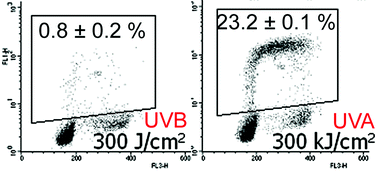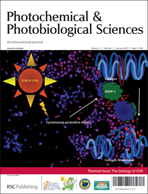Mechanisms of UVA-mutagenesis remain a matter of debate. Earlier described higher rates of mutation formation per pyrimidine dimer with UVA than with UVB and other evidence suggested that a non-pyrimidine dimer-type of DNA damage contributes more to UVA- than to UVB-mutagenesis. However, more recently published data on the spectra of UVA-induced mutations in primary human skin cells and in mice suggest that pyrimidine dimers are the most common type of DNA damage-inducing mutations not only with UVB, but also with UVA. As this rebuts a prominent role of non-dimer type of DNA damage in UVA-mutagenesis, we hypothesized that the higher mutation rate at UVA-induced pyrimidine dimers, as compared to UVB-induced ones, is caused by differences in the way UVA- and UVB-exposed cells process DNA damage. Therefore, we here compared cell cycle regulation, DNA repair, and apoptosis in primary human fibroblasts following UVB- and UVA-irradiation, using the same physiologic and roughly equimutagenic doses (100–300 J m−2 UVB, 100–300 kJ m−2 UVA) we have used previously for mutagenesis experiments with the same type of cells. ELISAs for the detection of pyrimidine dimers confirmed that much fewer dimers were formed with these doses of UVA, as compared to UVB. We found that cell cycle arrests (intra-S, G1/S, G2/M), mediated at least in part by activation of p53 and p95, are much more prominent and long-lasting with UVB than with UVA. In contrast, no prominent differences were found between UVA and UVB for other anti-mutagenic cellular responses (DNA repair, apoptosis). Our data suggest that less effective anti-mutagenic cellular responses, in particular different and shorter-lived cell cycle arrests, render pyrimidine dimers induced by UVA more mutagenic than pyrimidine dimers induced by UVB.


 Please wait while we load your content...
Please wait while we load your content...